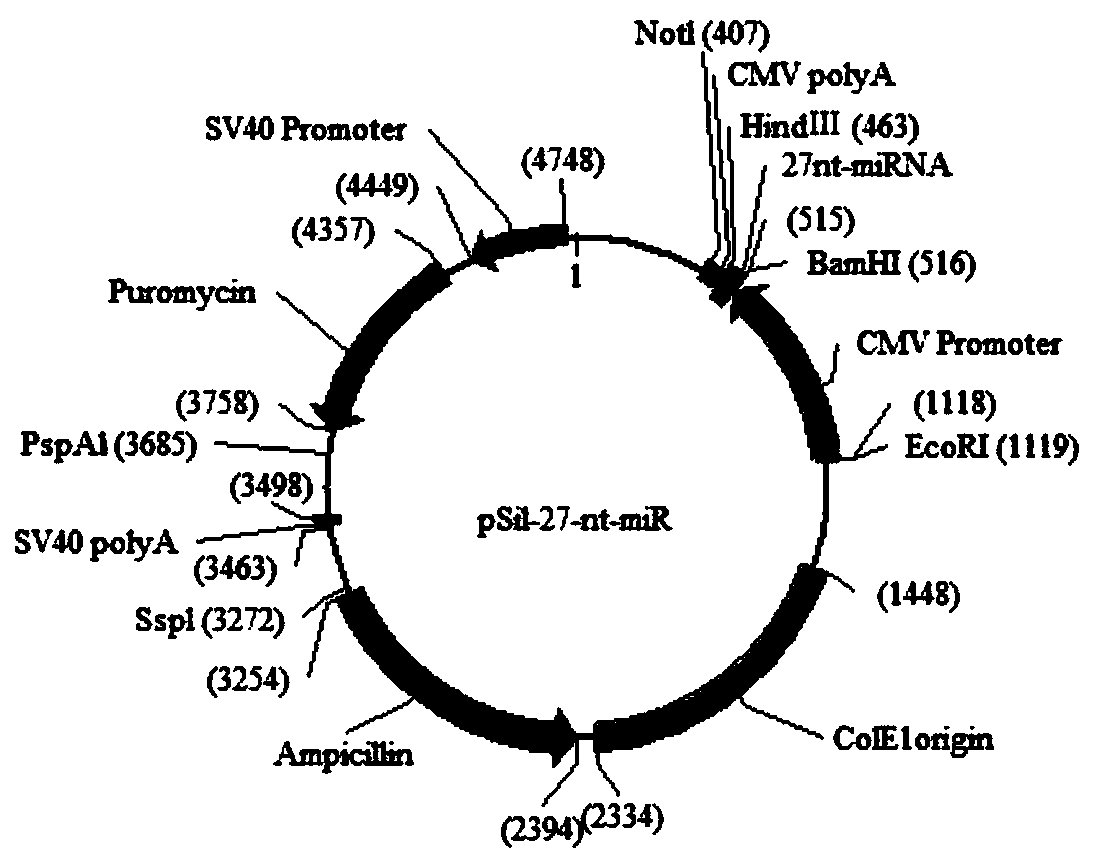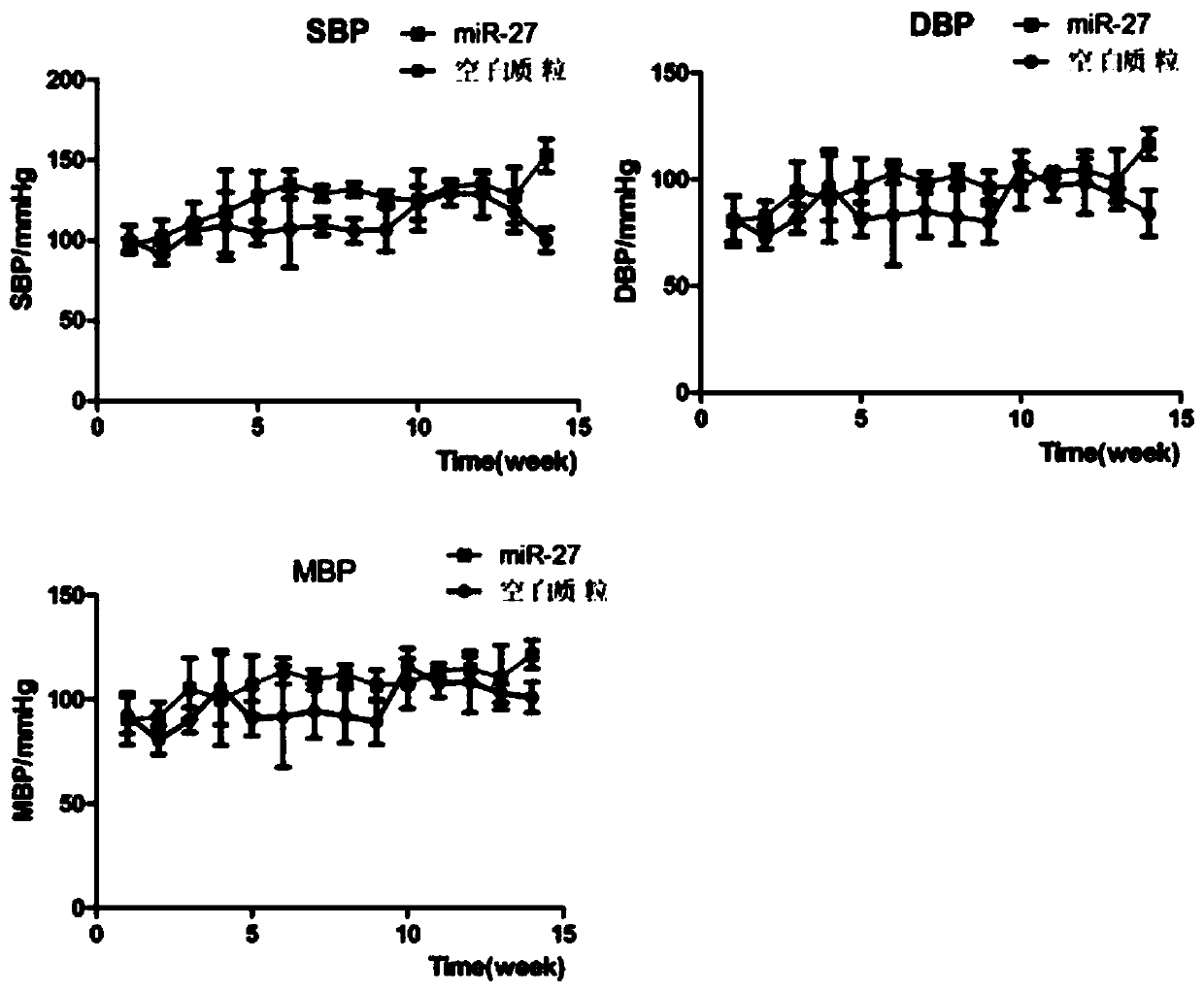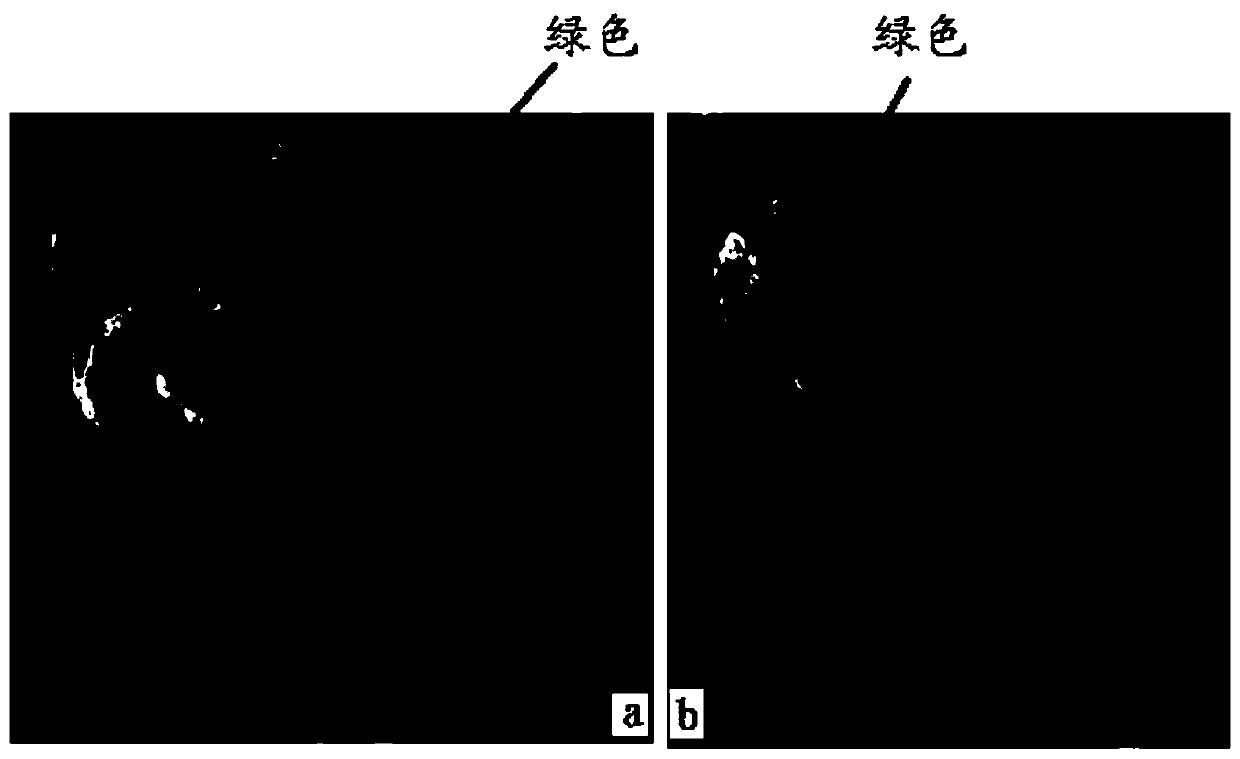Human intron derived 27 base microRNA and application thereof to blood pressure regulation
An intron and base technology, applied in the field of rat tail vein injection and gene recombination, can solve the problems of unknown etiology of hypertension, unclear mechanism of pathological development, lack of disease prevention and treatment measures, etc.
- Summary
- Abstract
- Description
- Claims
- Application Information
AI Technical Summary
Problems solved by technology
Method used
Image
Examples
Embodiment 1
[0031] Example 1 Construction and detection of human intron-derived 27-base microRNA high-expression plasmid
[0032] The human intron-derived 27-base microRNA nucleotide sequence was obtained through the Blast system in NCBI, and its nucleotide sequence is shown in SEQ ID NO.1; the target gene was amplified by PCR, and the target gene was obtained under the PCR reaction system Gene fragment. After double digestion and linear ligation, use a small amount of plasmid extraction kit (Beijing Tiangen Biochemical Technology Co., Ltd.) to extract the plasmid, and take the positive clone liquid and send it to the company for sequencing identification. After the verification is correct, a large amount of amplification and extraction is carried out to obtain a human intron-derived 27-base microRNA high-expression plasmid (see figure 1 ).
[0033] Upstream amplification primer: 5'-GGAAGTCTAGACCTGCTGCA-3',
[0034] Downstream amplification primer: 5'-GTCGGTGTCGTGGAGTCG-3';
[0035] A...
Embodiment 2
[0038] Example 2 Transfection and transfection determination of human intron-derived 27-base microRNA high-expression plasmid in rat aortic tissue
[0039] The animals were randomly divided into two groups, 10 in each group, namely the 27-base microRNA group and the blank plasmid group. Rats in the 27-base microRNA group were mixed with 27-nt-miRNA high-expression plasmid and liposome at a mass ratio of 3:1, diluted with saline, and injected into the body through the tail vein, and rats in the blank plasmid group were treated with blank plasmid Inject into the body through the tail vein. The dosage of both groups was 100ng plasmid DNA / kg body weight, injected once every two days, and injected continuously for 15 weeks. Rats were kept in a suitable environment and allowed to eat and drink normally during this period.
[0040] After 15 weeks, the animals were sacrificed, and the aortic tissues of the rats were taken, frozen at -80°C, frozen sections were made, and the green flu...
Embodiment 3
[0041] The mensuration of embodiment 3 rat blood pressure
[0042] Before and after the injection, the systolic blood pressure (SBP), diastolic blood pressure (DBP), mean blood pressure (MBP) and heart rate (HR) of each rat were measured using a rat tail artery non-invasive blood pressure measuring instrument. Measure blood pressure at least 5 times in a row and take the average value. Measured twice a week, continuous observation for 15 weeks. During the experiment, the rats were given normal diet, water, and a suitable environment. The results showed that the SBP, DBP and MBP of animals in the 27-base microRNA group were all increased. The SBP, DBP and MBP of animals in the blank plasmid group were slightly elevated at first, and then gradually decreased to normal levels after the 10th week (such as figure 2 ); It shows that human intron-derived 27-base microRNA can increase blood pressure in normal rats.
PUM
 Login to View More
Login to View More Abstract
Description
Claims
Application Information
 Login to View More
Login to View More - R&D
- Intellectual Property
- Life Sciences
- Materials
- Tech Scout
- Unparalleled Data Quality
- Higher Quality Content
- 60% Fewer Hallucinations
Browse by: Latest US Patents, China's latest patents, Technical Efficacy Thesaurus, Application Domain, Technology Topic, Popular Technical Reports.
© 2025 PatSnap. All rights reserved.Legal|Privacy policy|Modern Slavery Act Transparency Statement|Sitemap|About US| Contact US: help@patsnap.com



